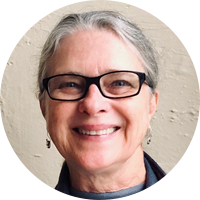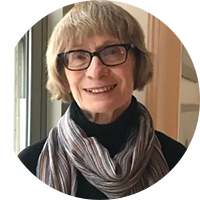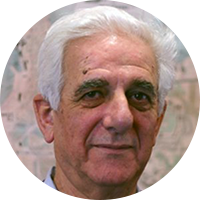-
Membership
Membership
Anyone with an interest in the history of the built environment is welcome to join the Society of Architectural Historians -
Conferences
Conferences
SAH Annual International Conferences bring members together for scholarly exchange and networking -
Publications
Publications
Through print and digital publications, SAH documents the history of the built environment and disseminates scholarship -
Programs
Programs
SAH promotes meaningful engagement with the history of the built environment through its programs -
Jobs & Opportunities
Jobs & Opportunities
SAH provides resources, fellowships, and grants to help further your career and professional life -
Support
Support
We invite you to support the educational mission of SAH by making a gift, becoming a member, or volunteering -
About
About
SAH promotes the study, interpretation, and conservation of the built environment worldwide for the benefit of all
Program Date: April 24, 2024
Chat Transcript
Q&A Transcript
In the context of the disastrous consequences of the ongoing war, this SAH CONNECTS panel will explore the entangled histories of aerial vision and the built environment in Palestine. What role do aerial vision and cartography play in casting light on the dispossession of Palestinians from Palestine, from their homes and territories? Although Palestine (especially Jerusalem) had been a favorite topic of pre-modern cartography due to its centrality to the three monotheistic religions, it was not until the nineteenth century that mapping the region became a significant military-scientific enterprise. Today Israel claims sovereignty over Palestinian airspace. This control has made it difficult to evaluate human loss, damage to archeological sites, infrastructure, environment, the residential fabric, and the land.
The program will build on the 2021 exhibition and book “Palestine from Above,” which showcased contemporary art works by local and international artists and practitioners, together with archival and historical documents. It was the culmination of a collaborative research project, also called “Palestine from Above,” and was curated by a committee comprised of Zeynep Çelik, Salim Tamari, Zeinab Azarbadegan and Yazid Anani. The “Palestine from Above” project (on view September 11, 2021 to January 15, 2022 at the A.M. Qattan Foundation, Ramallah, Palestine) traced various imperial, colonial, and Zionist efforts to surveille the territory.
The program will begin with 30-minute presentations by Zeynep Çelik (FSAH, distinguished professor emerita at the New Jersey Institute of Technology, and Sakip Sabanci visiting professor of History at Columbia University) and Salim Tamari (Institute for Palestine Studies senior fellow and professor of sociology at Birzeit University), who will speak on the history of Palestinian architecture and urbanism, and its representation, from the late nineteenth century to the end of World War I. Using photographs and maps, Prof. Çelik will argue that the Ottomans claimed Palestine through modern technology from the 1880s to 1918. Prof. Tamari will discuss how viewing Palestine from the sky is historically part of a colonial war of subjugation and control, waged through cutting-edge photography, cartography, remote sensing and surveillance, hand-in-hand with the operations of armies on the ground. Both will address how reading the aerial gaze on Palestinian geography requires scrutinizing the politics behind placing the technology in the sky, as well as the reasons why these images were produced.
Çelik and Tamari and moderator Morton will discuss how and if the historical awareness accumulated by the exhibition and publication project can be leveraged for disciplinary knowledge production among architectural historians. Following their presentations, Patricia Morton will lead a 30-minute Question and Answer discussion, focusing on the implications of their research for our discipline and what architectural historians who are not area experts can learn from this project.
Moderator

Patricia A. Morton, is the outgoing President of the Society of Architectural Historians and Associate Professor in the Media and Cultural Studies Department at the University of California, Riverside.
She is author of Hybrid Modernities: Architecture and Representation at the 1931 International Colonial Exposition in Paris. She has lectured and published widely on architectural history and race, gender and identity, including her essay, “Decolonizing the ACHAC Collection,” in Visualizing Empire: Africa, France, and the Politics of Representation edited by Dominic Thomas, et al (Getty, 2020). Her current project, Paying for the Public Life, analyzes written and built work by architect Charles W. Moore and his collaborators to trace publics and counterpublics in postwar United States. She is a past editor of the Journal of the Society of Architectural Historians.
Panelists

Zeynep Çelik, FSAH, distinguished professor emerita at the New Jersey Institute of Technology, and Sakip Sabanci visiting professor of History at Columbia University, teaches history of architecture and urbanism, with an emphasis on the nineteenth and twentieth centuries and cross-cultural relations.
Her publications include The Remaking of Istanbul (Washington, 1986; California, 1993), Displaying the Orient: Architecture of Islam at Nineteenth Century World’s Fairs (California, 1992), Urban Forms and Colonial Confrontations: Algiers under French Rule (California, 1997), Streets: Critical Perspectives on Public Space (California, 1993—coeditor), and Empire, Architecture, and the City: French-Ottoman Encounters, 1830-1914 (Washington, 2008) and Walls of Algiers: Narratives of the City through Text and Image (Getty Publications and Washington, 2009--coeditor) and Scramble for the Past: A Story of Archaeology in the Ottoman Empire, 1753-1914 (Istanbul, 2011). Her most recent book, published in 2016, is a study on the Ottoman empire through archaeological research, titled “About Antiquities: Politics of Archaeology in the Ottoman Empire.” She served as the editor of the Journal of the Society of Architectural Historians (2000-2003). Professor Çelik is the co-curator of exhibitions at the Getty Research Institute, Los Angeles (2009) and SALT, Istanbul (2011-12).

Salim Tamari is the Institute for Palestine Studies senior fellow and the former director of the IPS-affiliated Institute of Jerusalem Studies.
He is editor of Jerusalem Quarterly and Hawliyyat al Quds and is a professor of sociology at Birzeit University. He has authored several works on urban culture, political sociology, biography and social history, and the social history of the Eastern Mediterranean. Recent publications include: Year of the Locust: Palestine and Syria during WWI (UC Press, 2010) Ihsan's War: The Intimate Life of an Ottoman Soldier (IPS, Beirut, 2008); The Mountain Against the Sea (University of California Press, 2008); Biography and Social History of Bilad al Sham (edited with I. Nassar,2007, Beirut IPS); Pilgrims, Lepers, and Stuffed Cabbage: Essays on Jerusalem's Cultural History (edited, with I. Nassar, IJS, 2005) and Essays on the Cultural History of Ottoman and Mandate Jerusalem (editor, IJS, 2005). Tamari has served as visiting professor, University of California at Berkeley (2005, 2007, 2008); Eric Lane Fellow, Cambridge University (2008); lecturer in Mediterranean Studies Venice University (2002-present); among other posts.


